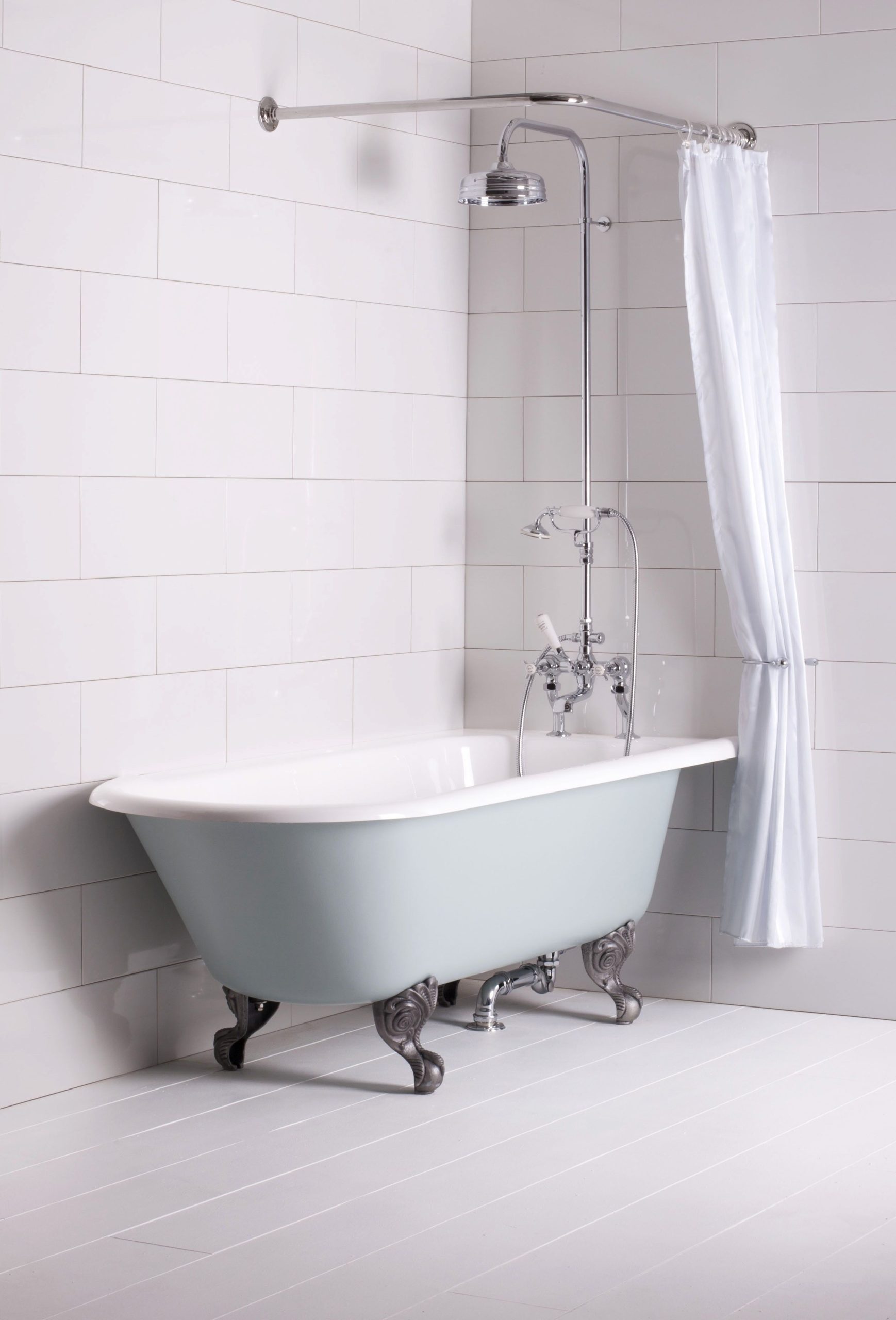This review explores the luxurious world of freestanding tubs and showers, offering a comprehensive guide to design, installation, costs, and the essential factors to consider before making a purchase. Whether you envision a classic clawfoot tub or a sleek modern design, this guide will help you create the bathroom of your dreams.
Designing Your Perfect Oasis
Creating a spa-like retreat begins with thoughtful design. Choosing the right freestanding tub and shower involves careful consideration of size, shape, material, and shower features.
Size and Shape: Finding the Right Fit
Before falling in love with a specific tub, measure your bathroom meticulously. A large tub in a small bathroom will feel cramped rather than luxurious. Consider using painter’s tape to outline the tub’s dimensions on the floor, giving you a realistic visualization of its footprint. Tub shapes range from classic rectangular and oval to the elegant curves of a slipper tub. A rectangular tub often suits a long, narrow bathroom, while an oval or circular tub can become a stunning centerpiece in a larger space.
Material Matters: Durability, Heat Retention, and Style
The tub material significantly influences aesthetics, practicality, and cost. Cast iron, known for its durability and exceptional heat retention, ensures a long, warm soak. Acrylic offers a more budget-friendly, lightweight alternative that’s easier to install. For an eco-conscious choice, consider rubberwood, a sustainable material prized for its warmth and moisture resistance. Explore our floor bedroom options to complement your bathroom renovation.
Shower Integration: Creating a Seamless Experience
The shower is integral to your freestanding tub experience. A luxurious rainfall showerhead, mounted on the wall or ceiling, can elevate your daily routine. A handheld showerhead provides added flexibility and convenience. Some freestanding tubs even come with integrated shower systems, streamlining both design and installation. Consider a free-standing tub with shower for a cohesive design. Positioning the tub near existing plumbing can simplify installation.
Installation: DIY or Professional Expertise?
While a seasoned DIY enthusiast might tackle installation, enlisting a licensed plumber is generally recommended, especially for complex plumbing tasks. A professional ensures proper installation and code compliance, preventing costly leaks and future issues.
Installation Overview:
- Preparation: Remove existing fixtures, level the subfloor, and ensure plumbing readiness.
- Tub Placement: Carefully position and level the tub for optimal drainage and aesthetics.
- Shower Enclosure (if applicable): Assemble any shower enclosures, ensuring watertight seals.
- Plumbing Connections: Connect water supply and drainage lines with precision. This is where professional expertise is essential.
Budgeting for Your Bathroom Bliss
The cost of a freestanding tub and shower varies greatly depending on factors like material, size, features, and brand. Think of it as customizing a pizza – premium toppings come at a premium price.
Cost Factors:
| Factor | Impact on Cost |
|---|---|
| Tub Material | Cast iron tends to be pricier than acrylic. |
| Size | Larger tubs generally cost more. |
| Features | Advanced shower systems and extra features add to the cost. |
| Brand | Premium brands often command a higher price. |
Expect to spend between $1,000 and $6,000, or potentially more, for a complete freestanding tub and shower setup. While high-end models can climb even higher, many stylish and functional options exist within more modest budgets.
Unveiling the Downsides: A Realistic Perspective
While visually appealing, freestanding tubs have potential drawbacks:
Cost and Space:
- Higher initial cost and installation: Freestanding tubs often exceed the cost of standard built-ins, both in purchase price and installation expenses.
- Space requirements: These tubs demand more space than traditional tubs. Consider the area needed for access and cleaning.
Practical Considerations:
- Accessibility: Stepping into a freestanding tub can be difficult for some.
- Storage: Freestanding tubs lack built-in storage, requiring additional solutions.
- Cleaning: Cleaning around a freestanding tub can be more challenging.
- Heat Retention: Some materials, like acrylic, may not retain heat as well as cast iron.
Showering with a Freestanding Tub: Making it Work
Integrating a shower with a freestanding tub is achievable with the right approach.
Showering Solutions:
- Shower Kits: Specifically designed kits provide all necessary components.
- Curtain Options: A circular rod with a weighted curtain can help contain water spray. A curved rod may offer more space.
- Partial Enclosures: Glass panels or screens minimize splashing while showcasing the tub’s beauty.
Finding Your Perfect Fit: Bathtub Length
Choosing the right length is crucial for a comfortable soak. Standard tubs range from 55 to 72 inches, with 60 inches being a common length. Smaller tubs, around 45-54 inches, suit tighter spaces, while extra-long tubs exceeding 72 inches offer a more luxurious experience. Consider your height, bathing style, and bathroom size when making your selection. Refer to the table below for a quick guide:
| Feature | Small (45-54″) | Average (55-72″) | Large (72″+) |
|---|---|---|---|
| Bathroom Size | Small | Medium to Large | Large |
| Bather Height | Shorter | Average | Taller |
| Bathing Style | Sitting | Soaking/Showering | Luxurious Soaking |
| Cost | Lower | Mid-range | Higher |
Conclusion: Creating Your Bathroom Sanctuary
A freestanding tub and shower can transform your bathroom into a relaxing oasis. While some challenges exist, careful planning, budgeting and consideration of the potential downsides can help you fully enjoy the luxurious benefits of this stunning bathroom centerpiece.
- The Best Battery Picture Lamps for Effortless Artwork Illumination - April 1, 2025
- Double Sink Bath Vanity Tops: A Buyer’s Guide - April 1, 2025
- Bath Towel Measurements: A Complete Guide to Choosing the Right Size - April 1, 2025










